Growing American Football in the Canary Islands
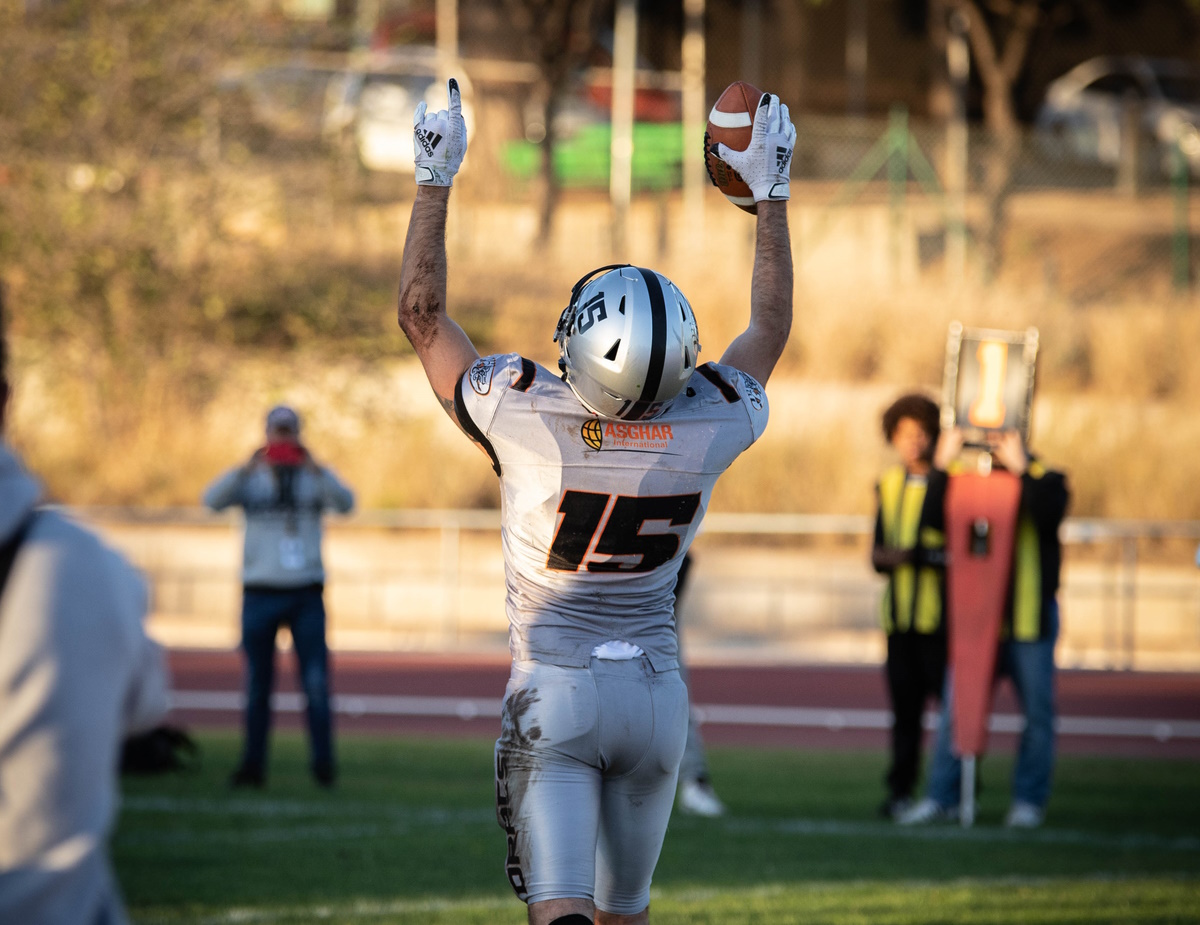
Just off the south coast of Morocco lies the Canary Islands. An autonomous community of Spain roughly 1,200 kilometers from Cádiz on the country’s south coast and over 2,500 kilometers from Barcelona in the northeast, it’s easy to paint a picture of isolation.
But with that isolation comes both natural beauty and a strong sense of community. With a population of just over 2.2 million people spread out over several islands, those who call the islands home are tight-knit. Those close connections trickle down to every facet of life, including sports.
Over time American football has begun to grab a foothold on the islands, but not without its fair share of obstacles, both economically and that very isolation from the rest of Spain. However, people who care about American football truly do want to see it grow, which has contributed to a slow uptick in interest and popularity. This is what American football and its growth looks like on the Canary Islands.
A handful of semi-professional teams call the islands their home, but the two biggest are undoubtedly Tenerife United, on Tenerife, and Telde Canes, on Gran Canaria. Both teams currently play in Serie B of the Liga Nacional de Fútbol Americano, the second division of Spain’s largest professional league.
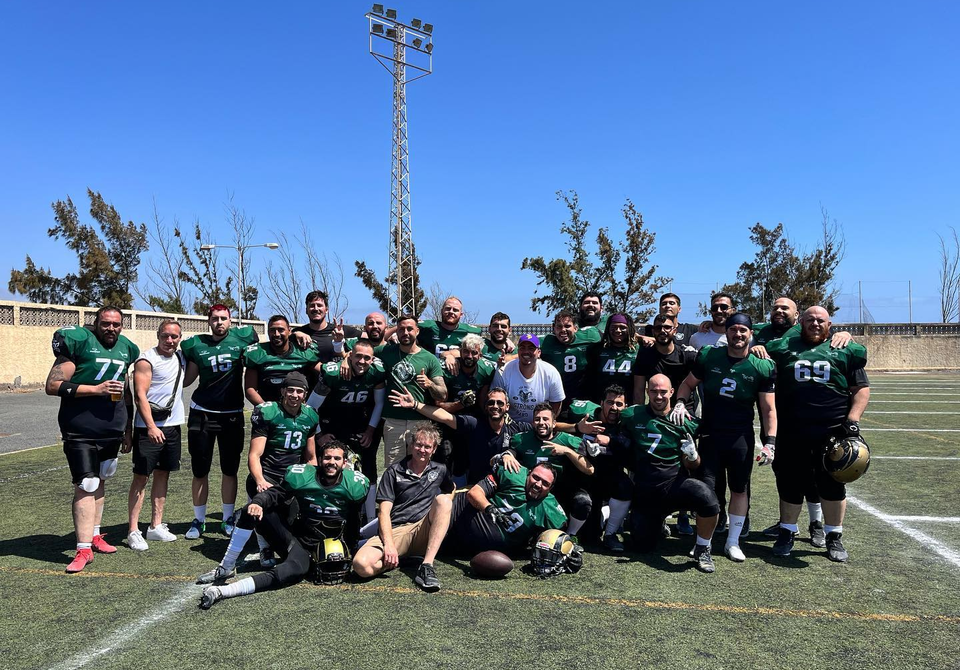
Tenerife United following recent win over the Telde Canes
What exactly does football at the highest level on the islands look like for these two teams? Take Telde Canes, a team that’s available resources include a field and a few pieces of equipment like goalposts and pylons. The Canes qualified for the playoffs last season in their first year in the Serie B, but because they don’t have a juniors team, they couldn’t participate.
“It’s a team from a small island that had a lot of adversities in all these periods,” Badalona Dracs receiver Iván Caballero said. “However, they are sticking together, working with a lot of kids from different schools and trying to make football better in the islands.”
Caballero would know. Born in Arucas, Gran Canaria, the Dracs’ receiver is strongly invested in the growth of the sport among the islands he first called home. Like many kids growing up in the Canaries, Caballero’s interest and first exposure to the sport came late. He was 17 when he first heard about Templar Gran Canaria, a tackle football team close to home. However, as Caballero also played basketball at the time, he never got into the sport, but those practices planted a seed.
A few years later, when Caballero was living and studying in Slovenia, a coworker told him about an American flag football team there, the Ljubljana Frogs. Now around 22 years old, he remembered trying the sport out as a teenager and gave it another shot. That’s all he needed to fall in love.
Caballero soon finished his studies and left Slovenia, but by then he was hooked on American football. He returned to the Canary Islands and played flag football with the Atlantic Devils, which plays in the Spanish Cup. During that time, he also worked and practiced with Telde Canes before leaving for Catalunya in 2021.
“Telde Canes is a great team,” Caballero said. “The people are super nice and they have been playing for a really long time.”
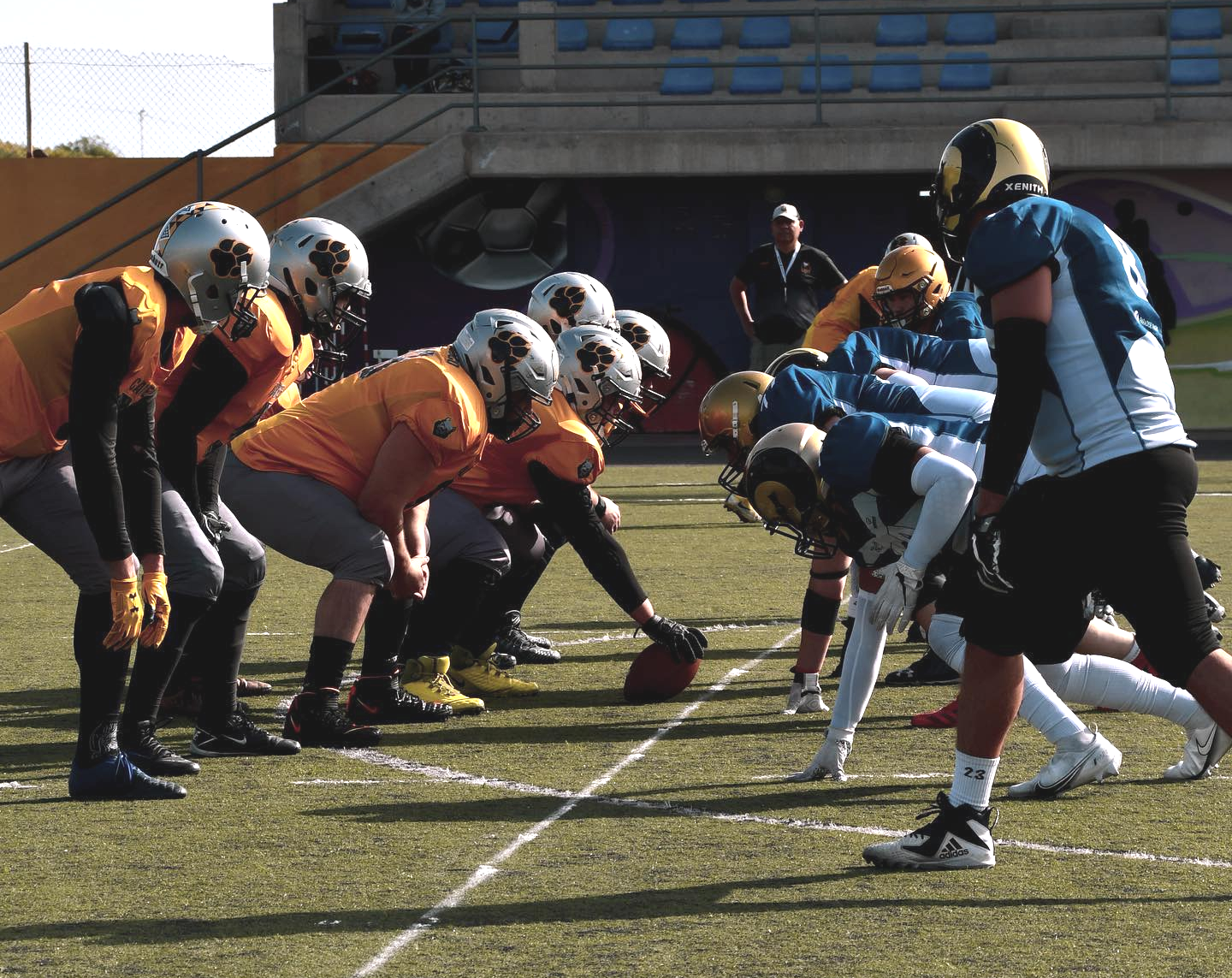
Telde Canes (L) squaring off against Tenerife United
Being isolated on an island off the coast of Africa, the main obstacle these teams face is traveling and finding diverse opponents. Today, Tenerife United and Telde Canes play one another five times each season and then will play three opponents from mainland Spain. Both teams also have fewer sponsors than other teams in the league as well because the income of local companies in the Canary Islands is comparatively lower and they don’t have much of a sponsorship budget. This presents headaches when it comes to traveling, especially with a roster at least two-deep.
“You need to move a whole team, not just with flights but also with accommodations,” Caballero said. “They don’t have enough money because there are no sponsors, so players and their families need to pay for it.”
Both the Telde Canes and Tenerife United hope to continue growing in size over the next several years as well. With roughly 25 to 30 players a season, dealing with injuries and other absences is difficult. On an island with just over 2.2 million people, most coming as tourists, American football also competes with other popular sports such as basketball, fútbol (soccer), hockey and swimming.
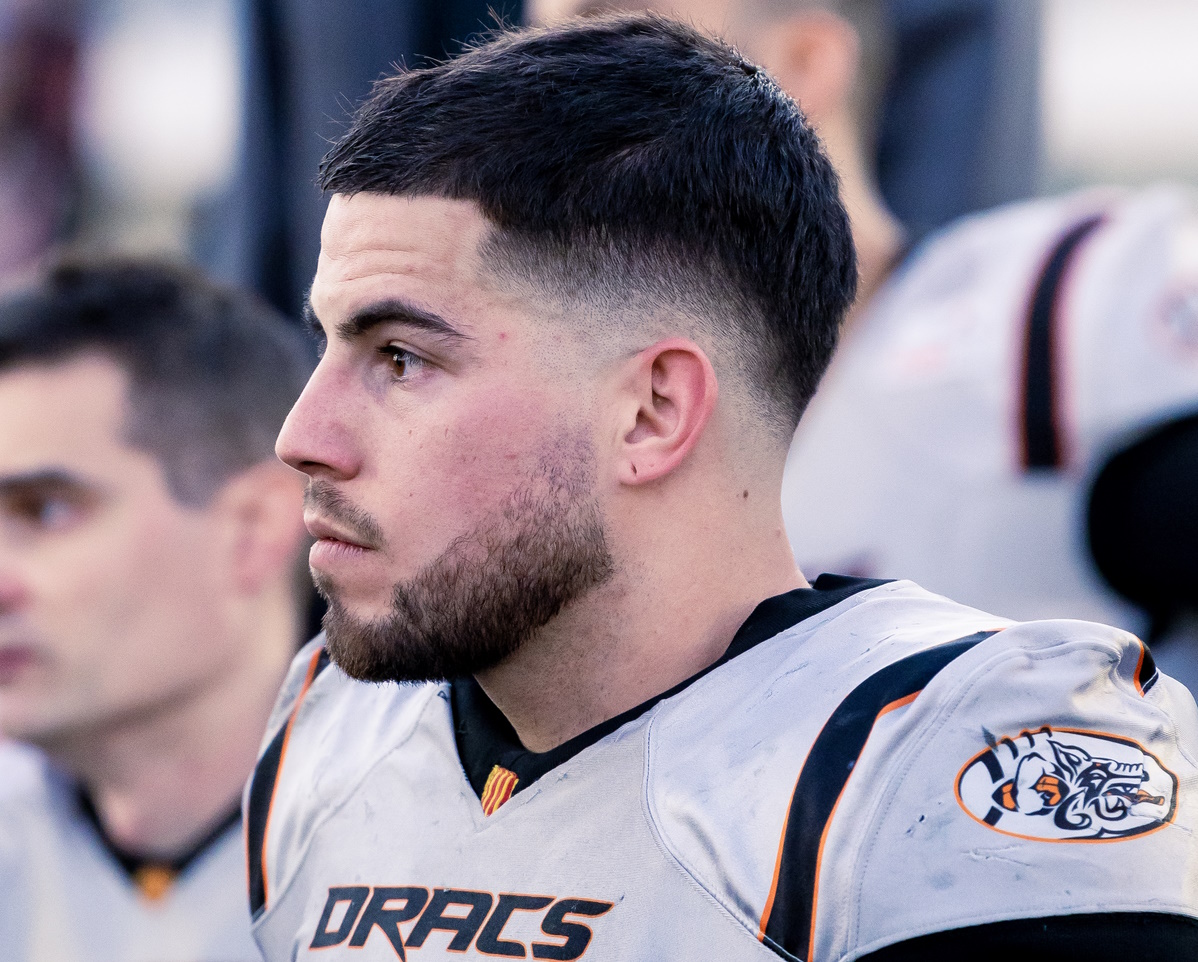
Badalona Dracs receiver Iván Caballero comes from Gran Canaria and played for the Telde Canes
If you pay attention, though, it’s becoming easier to see a steady growth in the United States’ most popular sporting export. With two of the most populated islands hosting Serie B teams, there is more local excitement and visibility. Local players also play higher-level competition with even better coaching.
Today, you’ll find players from the Canary Islands playing on Spain’s Junior National Team where they compete against some of the most talented young Spanish players in practice and play against other countries. They experience different types of coaching and bring some new fundamentals back with them. This growth is happening slowly, but Caballero can now point out visible progress being made.
“We have to do a lot of work in schools right now, starting with flag football,” Caballero said. “Attracting younger players to play will make a lot of tackle players in the future. For me, the good thing is people are getting together, sticking together over the years and are making a good project.”
When Caballero returns home, after spending time with friends and family, he always finds time to go to Telde Canes practices. Sometimes he even participates. When he’s at practices, young players will always come up and ask him what it’s like to play in Serie A on mainland Europe, especially on a team as big as Badalona. To younger players, who can’t imagine leaving the islands, let alone doing so and playing football, Caballero is a big success story.
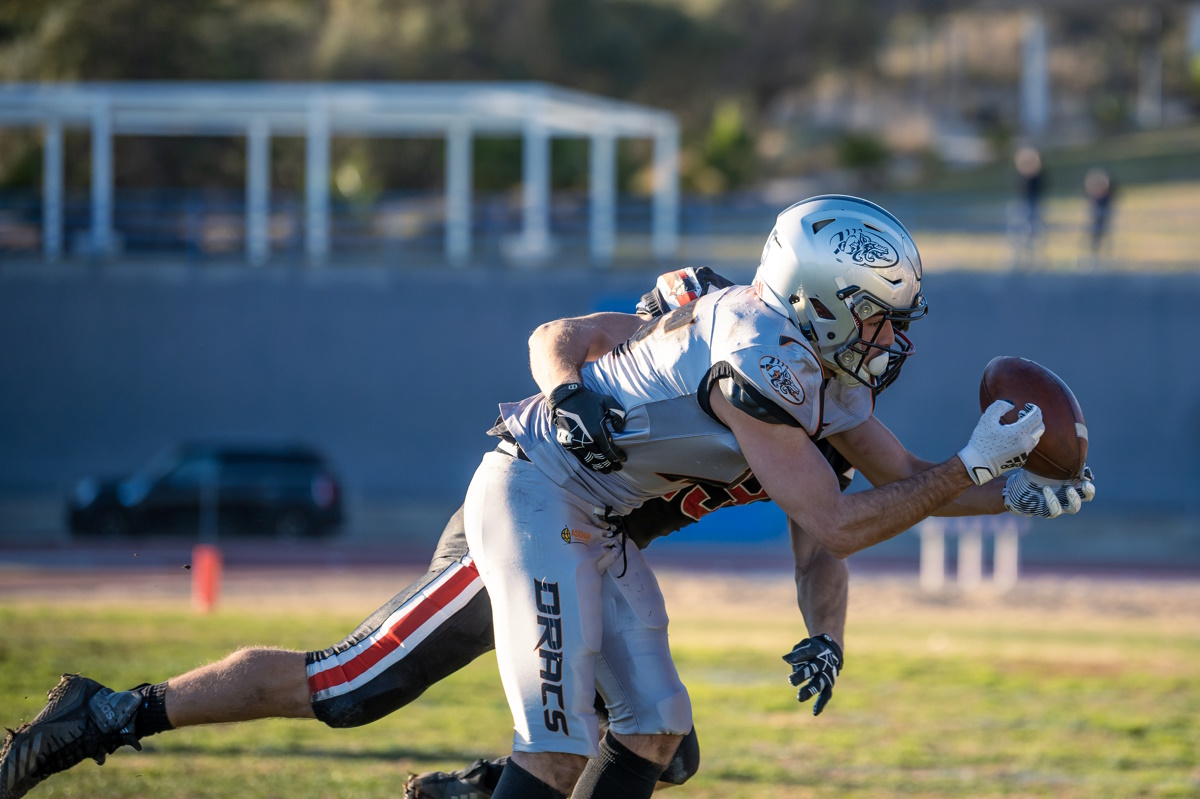
Badalona Dracs receiver Iván Caballero hanging on to a pass
“When you go there, they are always asking how practices are, what it’s like to play with people from the United States, which isn’t common,” Caballero said. “For me, I say it’s a dream to be in Badalona, to have this quality of coaching, peers and rivals.”
While there aren’t many players in Serie A from the Canary Islands, there are a handful, including Caballero. The goal, of course, is that more young players break through in Spain’s most competitive league, but it’s an early sign that there are players with high aspirations. That much excites Caballero, who’s thrilled to see what the future brings and how American football continues to evolve as it overcomes obstacles and continues to grow in the Canary Islands.
“[American football] is growing,” Caballero said. “I would say it’s not like mainland Europe at all, but the people who are making it grow are really sticking together and making a good community out of it.”